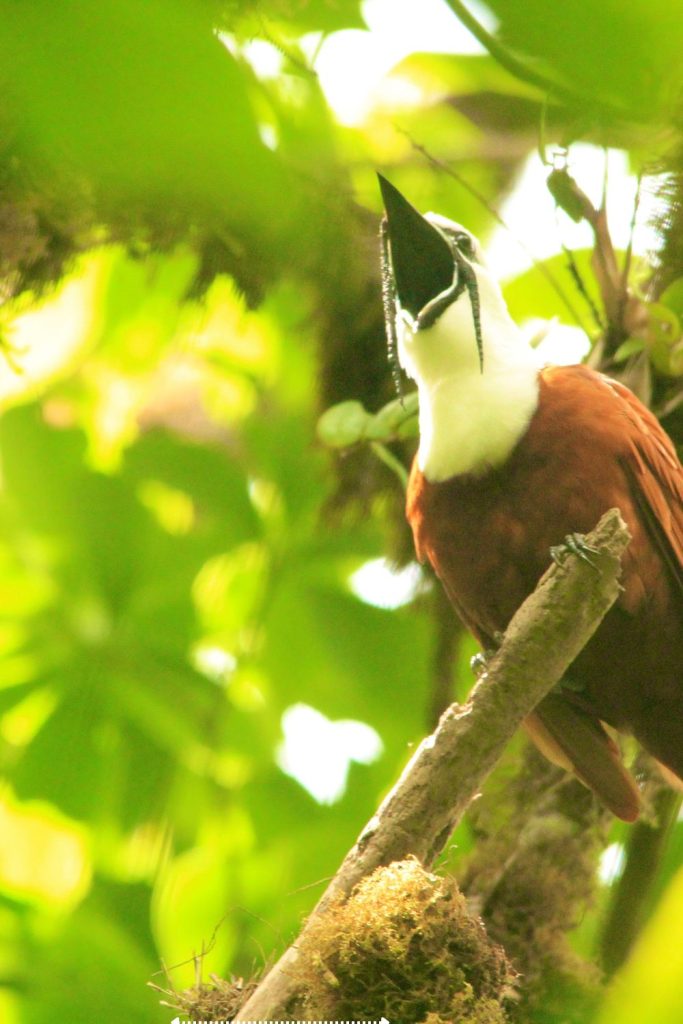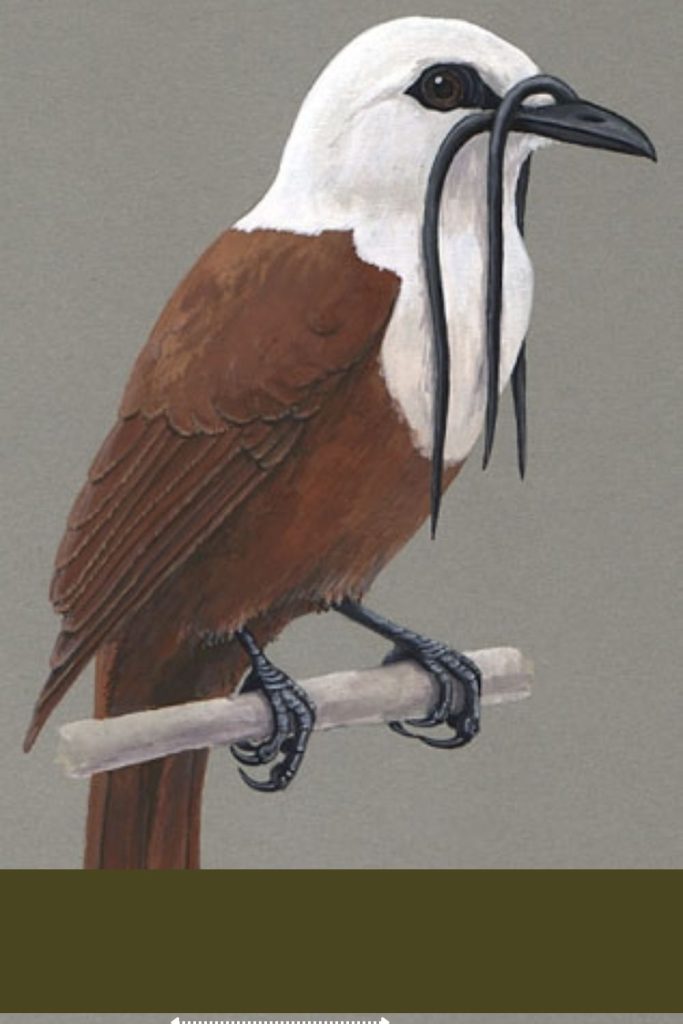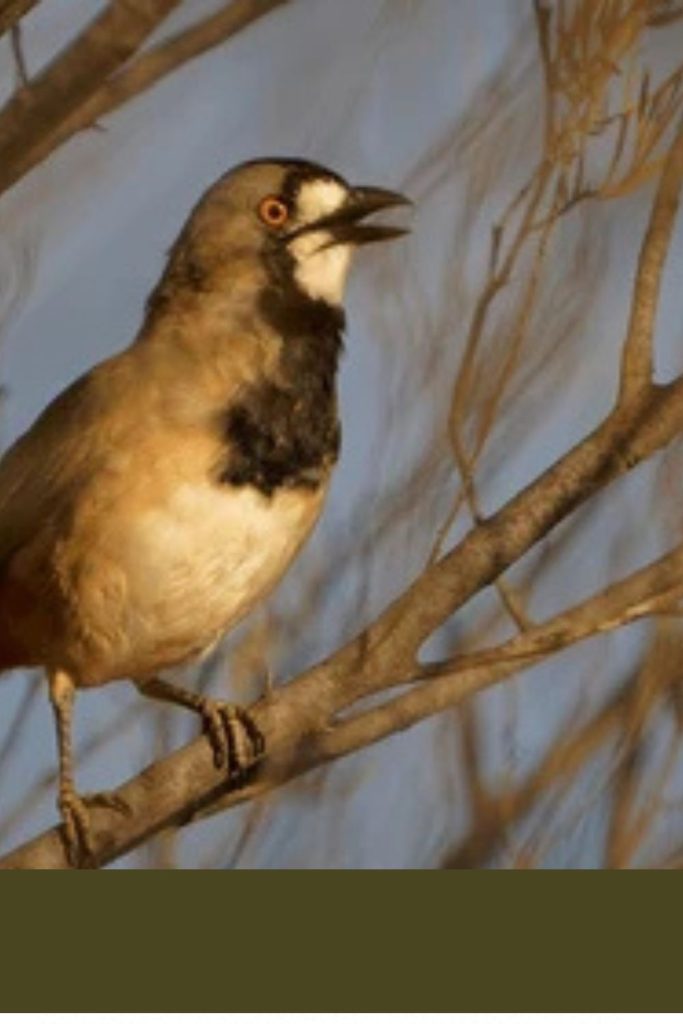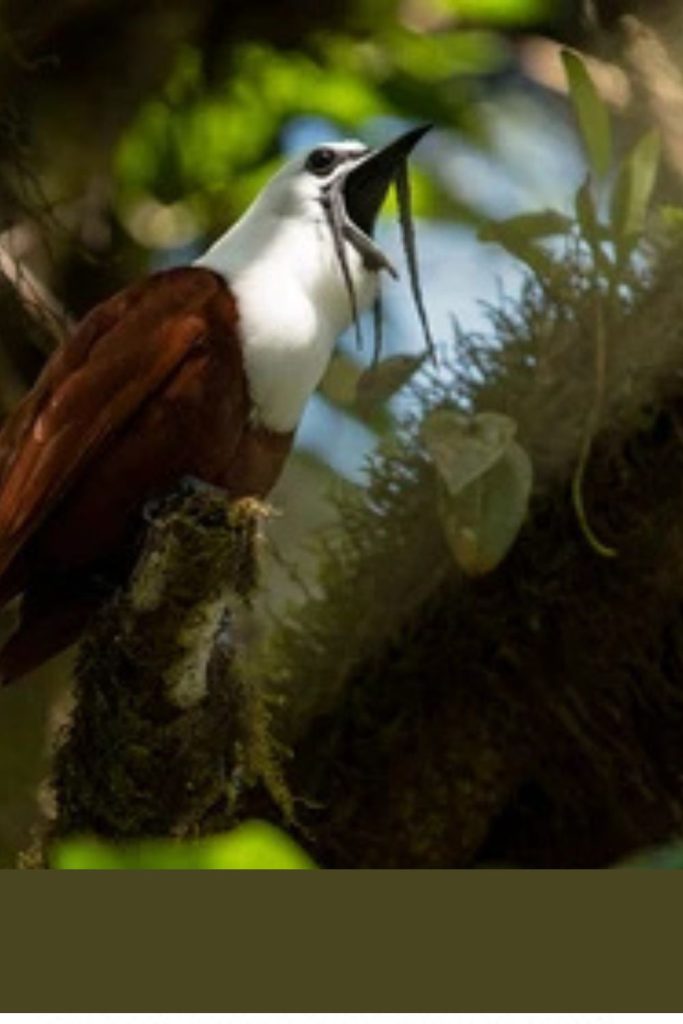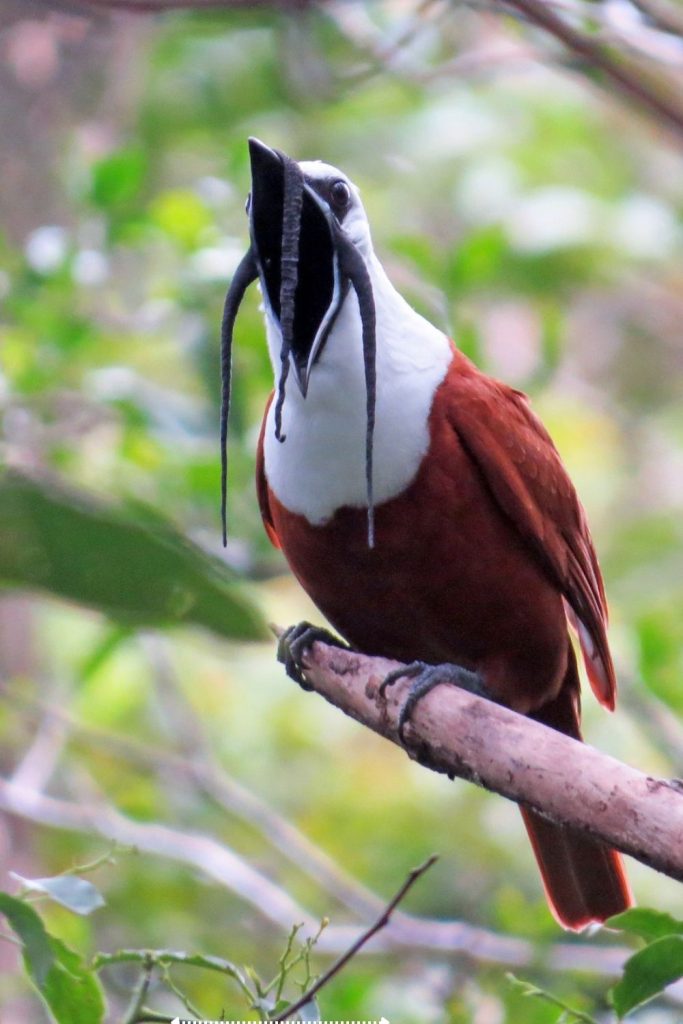Visual Identification
The White Bellbird: Nature’s Loudest Singer
Deep in the rainforests of South America lives a bird with an extraordinary talent—the white bellbird (Procnias albus). While many tropical birds stand out with bright colors, this species makes its mark in a different way: it holds the title of the world’s loudest bird.
Found in the Guianas, Brazil, Venezuela, and Trinidad and Tobago, the white bellbird may look plain at first glance—mostly white or gray with a distinctive wattle hanging from its beak. But when the male starts singing, his deafening call can reach 125 decibels, louder than a jackhammer or a thunderclap! Scientists believe this extreme volume helps it communicate across dense forests, where sound can get lost among the trees.
What’s even more surprising is its unusual courtship behavior. Instead of singing softly to attract a mate, the male turns away from the female and blasts his loudest call right in her face—a puzzling habit that researchers are still trying to understand.
From its record-breaking screams to its mysterious love rituals, the white bellbird proves that sometimes, the most fascinating creatures aren’t the flashiest—they’re the ones you can hear from miles away!
Appearance
Male: Mostly snow-white with a black beak and a unique, dangling dark wattle (a fleshy growth) hanging from the top of its bill, usually on the right side.
Female: Olive-green with yellowish underparts, lacking the male’s wattle. She closely resembles other bellbird species, like the Bearded Bellbird.Beak: Wide and strong, perfect for swallowing fruits whole..
Size
 Length:
Length:28 cm (11 inches)
 Wingspan:
Wingspan:80–95 cm
 Weight:
Weight:250 g or half a pound
Colours
| Male | Female | |
|---|---|---|
| Primary Colour | Pure white plumage | Olive-green plumage |
| Secondary Colour | Black (beak and wattle) | Yellowish underparts |
| Beak Colour | Black | Pale (likely blackish-grey) |
| Leg Colour | Grey | Grey |
Habitats
Urban
Farmland
Grassland
Woodland
Wetland
Coastal
Desert
Mountain
Tundra
Rainforest
White Bellbird Habitat Distribution
✅ Rainforest – Primary habitat, found in the canopy and edges of humid Amazonian forests.
✅ Woodland – Occurs in subtropical/tropical mountainous woodlands (below 1,250 m elevation).
✅ Mountain – Prefers humid mountainous regions within its range.
Behaviour & Ecology
Bird Attributes Beta
Hover over the icon next to each attribute for more information.
Attribute Categories:
- Agility: Manoeuvrability, speed, and grace in flight or movement.
- Strength: Physical power, often correlating with size and hunting abilities.
- Adaptability: Ability to thrive in various environments or changing conditions.
- Aggressiveness: Territorial behaviour and assertiveness, particularly during breeding seasons.
- Endurance: Stamina, often seen in migration patterns or foraging behaviours.
Understanding the Ratings:
Daytime Behavior & Feeding Strategy
The White Bellbird is strictly diurnal, most active during daylight hours when its incredible vocalizations carry farthest through the forest. These birds employ a unique “perch-and-boom” hunting strategy:
Canopy Positioning
They station themselves high in emergent trees, using their elevated vantage points to scout for fruiting trees across the forest canopy.
Acoustic Advantage
Their extraordinary vocalizations may serve dual purposes—while primarily for mating displays, the loud calls could potentially help locate other bellbirds at productive feeding sites.
Precision Feeding
When they spot fruiting trees, they make direct, powerful flights to feed. Their large beaks allow them to swallow fruits whole in a characteristic “gulp-and-go” feeding pattern.
Seed Dispersal
After feeding, they typically perch quietly while digesting, later regurgitating seeds at considerable distances from the parent tree—making them important agents of forest regeneration.
Lifespan
Wild Average: Unknown (research ongoing)
Maximum (Wild): Likely 5–10 years (based on similar tropical bird species)years
Captivity Record: Not confirmed, but potentially up to 12–15 years in optimal habitats
Wild lifespan averages about Approx. 8 years, but individuals in captivity may exceed 20 years; the record wild bird is ~12–15 years.
Did you know? The white bellbird is the loudest bird ever recorded, reaching sound levels of up to 125 decibels. That’s louder than a thunderclap!
This South American bird isn’t just loud—it’s unique. The male performs its call directly at the female during courtship, a behavior scientists are still trying to understand.
Diet & Feeding
The white bellbird’s treetop lifestyle makes it one of the Amazon’s most challenging birds to observe.
These birds spend nearly all their time in the uppermost canopy of towering rainforest trees, often 30-50 meters above the forest floor.
Their preference for these dizzying heights, combined with the dense foliage of the Amazon, makes spotting them a true test of patience for even experienced birdwatchers.
Equipped with specially adapted wide beaks, white bellbirds play a crucial ecological role as seed dispersers.
gorge on whole fruits in the canopy, later regurgitating or passing the seeds as they move through the forest.
This feeding behavior helps maintain the biodiversity of their rainforest home by spreading seeds across large distances.
Their diet consists almost exclusively of fruit, which they swallow whole – an impressive feat considering some of these fruits can be nearly as large as the bird’s head!
The species’ canopy-dwelling habits and frugivorous diet explain why sightings are so rare, making every encounter with these loud but elusive birds a special moment for researchers and bird enthusiasts alike.
White Bellbird – Quick Facts
References
- Katherine J. Wu (2019), “World’s loudest bird flirts by screaming in your face“, PBS.
- “Guyana – Main Details“, Convention on Biological Diversity.
- Burton, P. J. K. (2009), “Structure and histology of the wattle in the White bellbird (Procnias alba)“, Journal of Zoology.
- Adrian Burton (2020), “The bellbird’s horn“, Frontiers in Ecology and the Environment.
- Jeff Podos (2019), “Amazon’s White Bellbirds Set New Record for Loudest Bird Call“, UMASS.

